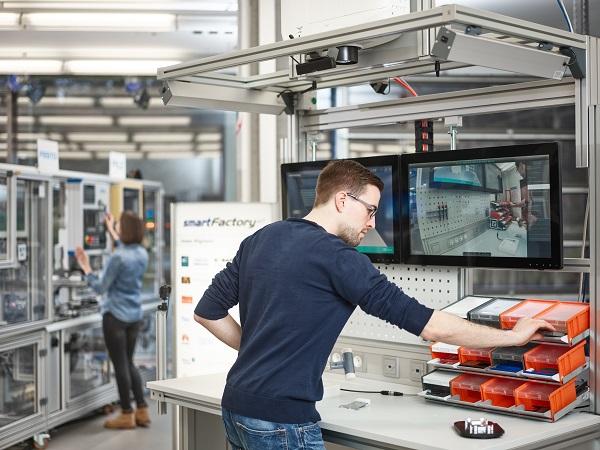
Date: 6 February 2018
The term Industry 4.0 has been on everyone’s lips for some time now. It is synonymous with digitalisation and connection of the complete industrial value chain.
After dramatic developments at beginning of the industrial age such as the introduction of the steam engine, assembly line and later IT, the 4th Industrial Revolution is now marked by more and more smart factories.
This change does not stop short of glass production, processing and finishing either. Many exhibitors at glasstec 2018 in Düsseldorf will therefore focus on the theme of Industry 4.0 and exhibit interesting developments.
Incidentally, the term “Industry 4.0” was already invented as early as in 2011 on the occasion of the Hannover Fair.
The truly revolutionary thing about this trend, however, is the digitalisation and connection of the entire industrial value chain – from order entry and upstream supplies orders to manufacturing and complete logistics.
And when experts talk of the Internet of Things, this also means that the connection, of course, is no longer limited to your own “four factory walls”. All your suppliers and customers are also incorporated into this virtual network. This makes it possible to trigger order processes immediately and to state precise delivery times for even the smallest of batch sizes.
Because both your material inventories and those of your suppliers are checked almost simultaneously to verify and/or lay down manufacturing timetables. In such a flexible production environment machines also plan their own maintenance intervals scheduling them in production breaks and over the weekend. Down times are to be avoided if possible.
This means that at smart factories products can handle their own manufacturing process and even control their own quality assurance. Humans are assisted by smart training and assistance systems in their increasingly complex job routines and, needless to say, form part of this giant network.
For many this will probably still sound like wishful thinking but it is increasingly real. After all, those not worrying about this today, will probably be ousted of the market tomorrow. Therefore, it comes as no surprise that some 70% of all SMEs are currently taking a very close look at Industry 4.0 concepts, says a study commissioned by the Ministry of Economics.
However, not all of them define Industry 4.0 in the same way. And, naturally, the requirements made on glass manufacturers differ from those made on window producers or finishers.
But both supposedly convert their outfits into smart factories in small steps such as the purchase of new machinery or manufacturing robots. But the changeover is inevitable since new technologies are more efficient thereby increasing competitiveness while cutting costs.
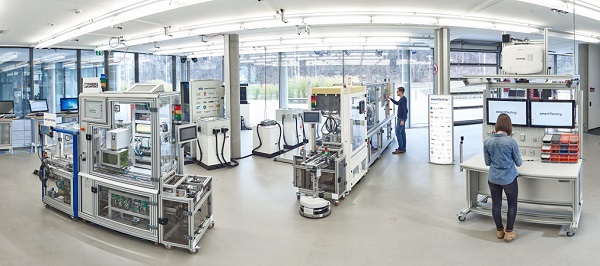
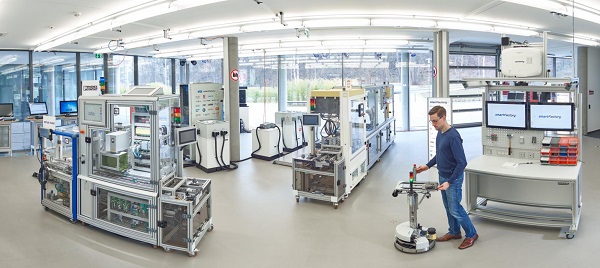
Interface: Software
In this increasingly automated and digitalised production process software plays a key role because it is these programs that enable communication and digital connection.
At a processor’s site, for example, there must be a high-performance overriding software that virtually “talks” to all machines while “staying in touch” with the outside world that also forms part of the network.
Alongside a common language and the respective interfaces the digital interplay of all parties involved also needs a sound database to work on. In this network the master software performs the function of an overriding control centre. The software collects incoming customer orders, processes and coordinates all machine data.
This means that order processes, maintenance and failure reports of the machines are also managed and handled by this central control software. To achieve perfect manufacturing capacity utilisation the software also assigns orders and items smartly and flexibly and, last but not least, also organises storage and logistics.
At a smart factory the software therefore has to feature virtually unlimited dovetailing options for networking. For many years the paperless office has been on everyone’s lips – but without any tangible success.
In the increasingly digitalised and automated production process low-paper and/or paperless manufacturing is already taken for granted today.
One example: at each workstation monitors display the required manufacturing data. Status reports can be retrieved at any time and any place. This means the whole process will become transparent – from the first to the last moment. And this also makes it possible to carry out more quality controls.
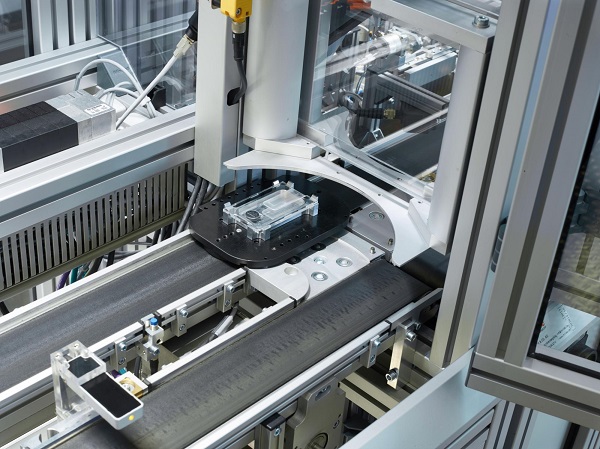
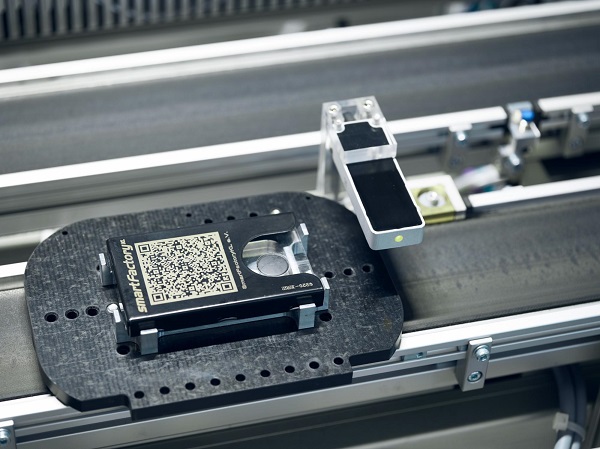
From Automation to Digitalisation
One example of change already taking place at many production sites is growing automation, which – in the figurative sense – can be seen as one step in the direction of Industry 4.0. In glass processing laser technology is being used to an increasing extent.
State-of-the-art laser finishing centres often meet all the needs of digitalised production. Lasers are used to apply extremely high-quality engravings to glass sheets. Any graphic design, any image or even any photo can be applied to glass sheets by means of lasering.
Around the globe it is architects, in particular, who are increasingly demanding that glass sheets are finished in this way as attractive and representative façade solutions for facilities. The same lasers can also perform drilling and cutting processes or edge deletion processes.
Permanent development of beam sources and improved software programs have increased processing speeds over the past few years and have also helped to put the oft lamented high power consumption in a perspective.
Automation enables modern machines such as lasers or manufacturing robots to operate practically round the clock and even at weekends. This necessarily also alters the demands made on the workforce. More and more specialists are called for in manufacturing because processes and tasks are becoming ever more complex.
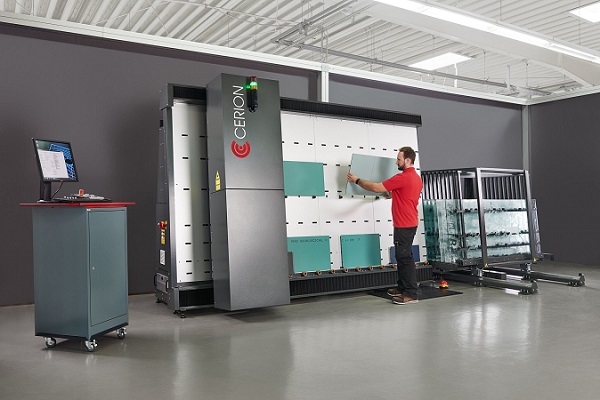
Support by Policy-Makers
Although the changes in companies are gradual, the glass sector is still undergoing fundamental change.
Fortunately, policy-makers are not leaving companies “in the lurch” in this process, as Prof. Dr. Detlef Zühlke, Chairman of the Board of the technology initiative SmartFactory KL e.V., stresses: “Ongoing education demonstrates to companies time and again the tremendous opportunities that digitalisation holds for them. It is in particular the SMEs so critical for Germany that need and receive support here.”
Early 2016 saw the first SME-4.0 Centres of Expertise being established and funded by the German Ministry of Economics. Their task is to accompany small and medium-sized companies in the implementation of ideas in the field of Industry 4.0 and digitalisation. These centres are also designed to adapt workers’ skills to the new challenges.
Many exhibitors at glasstec in Düsseldorf will pick up on the Glass Industry 4.0 theme and present their approaches in this field.
glasstec, 23 – 26 October 2018 in Düsseldorf
International Trade Fair for glass – Production, Processing, Products
23 – 26 October will see the proven No. 1 glass trade fair – glasstec 2018 – being held in Düsseldorf. The focus of glasstec 2018 will be on interactive glass in the flat glass segment and on energy-efficient and emission-reducing glass manufacturing technologies for container glass.
For exhibitors the most important visitor target group is the glass industry, followed by mechanical engineering, architecture and construction as well as German skilled craftspeople, and more and more craftsmen from abroad are also attracted.
The last glasstec 2016 registered 40,105 visitors from 121 countries. 1,237 exhibitors from 52 countries presented their latest products, machines, developments and visions to this trade audience. What makes this trade fair especially attractive for exhibitors is the high number of decision-makers among trade visitors.
Three quarters of them come from executive to top management and attended glasstec with concrete intentions to buy or on a quest for new suppliers. Trade visitors deem the high-quality contacts, the packed demonstration of innovative power and the visionary outlook on future developments and fields of business very valuable.
The latter is ensured by the special show glass technology live in Hall 11 – organised by a university cluster for the first time. This includes the Technical Universities of Darmstadt, Delft, Dresden and Dortmund.
In four glass cubes innovative solutions from the fields of Interactive Façades / Display Glasses, Energy and Performance, Structural Glass (solid glass / thin glass) will be exhibited here alongside pioneering technologies. In Hall 10 the conferences pooled under the umbrella brand glasstec conference will link theory and practice in appropriately themed lectures.
The Author
Matthias Fischer has worked as a freelance journalist and textbook author since 2009. He looks back on more than 25 years of experience in the industry and also headed a specialist construction magazine as a Vice-Editor-in-Chief for several years.
 600450
600450

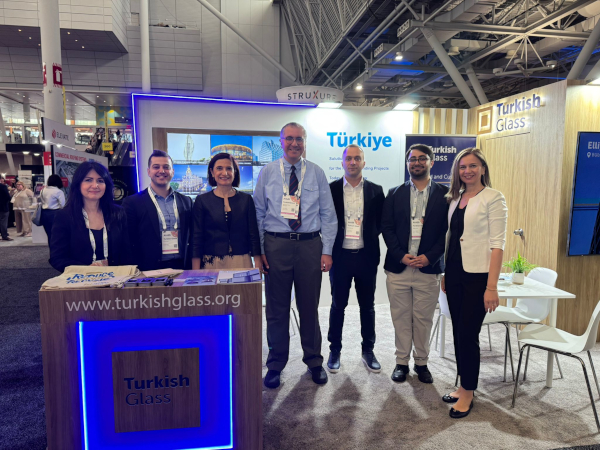
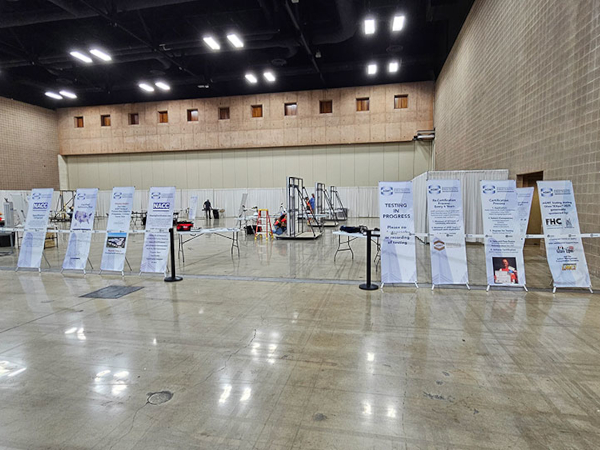


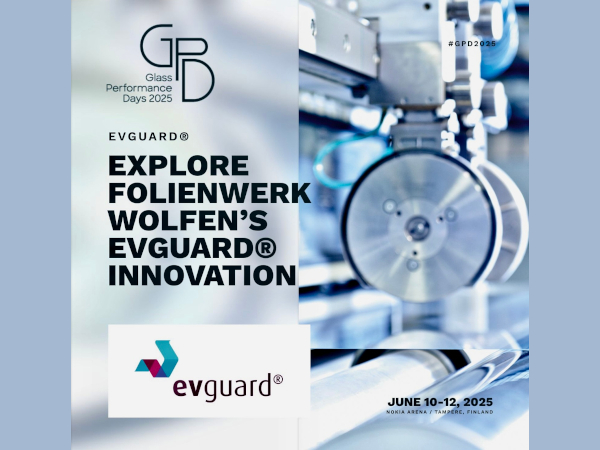
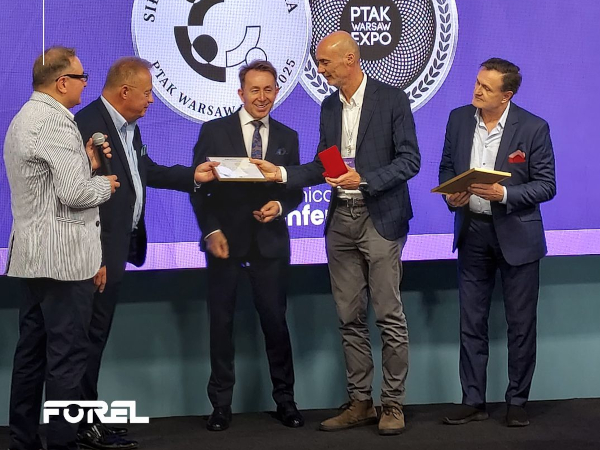











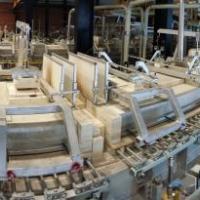

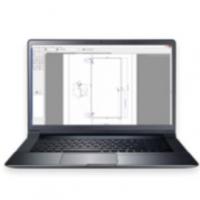


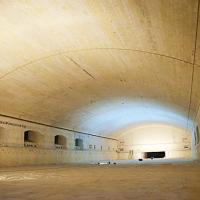
Add new comment